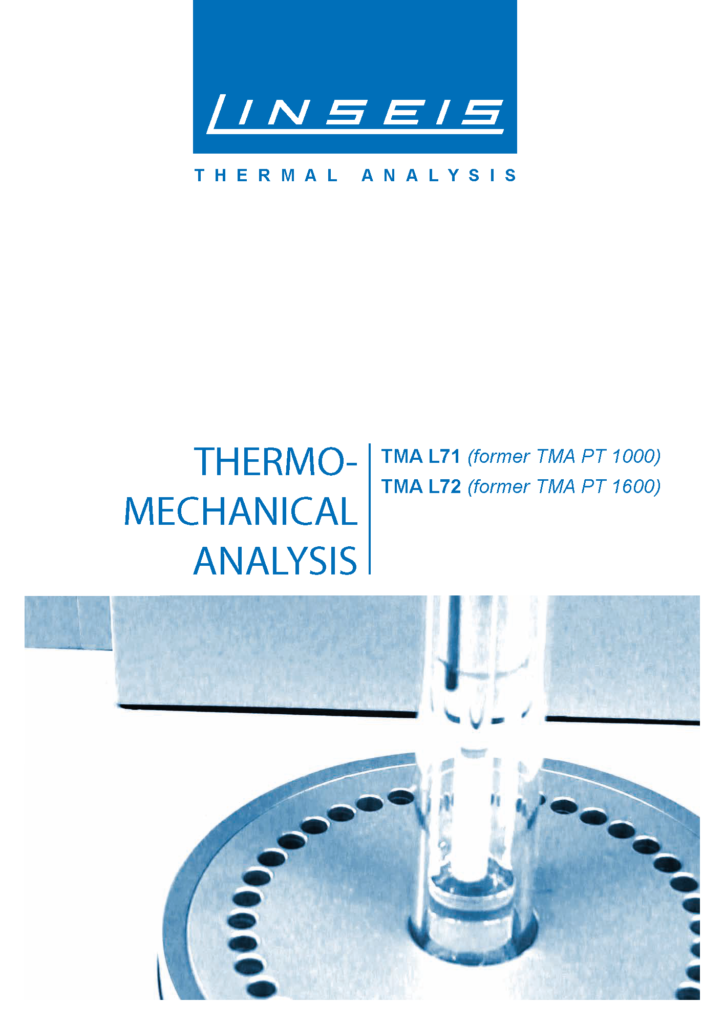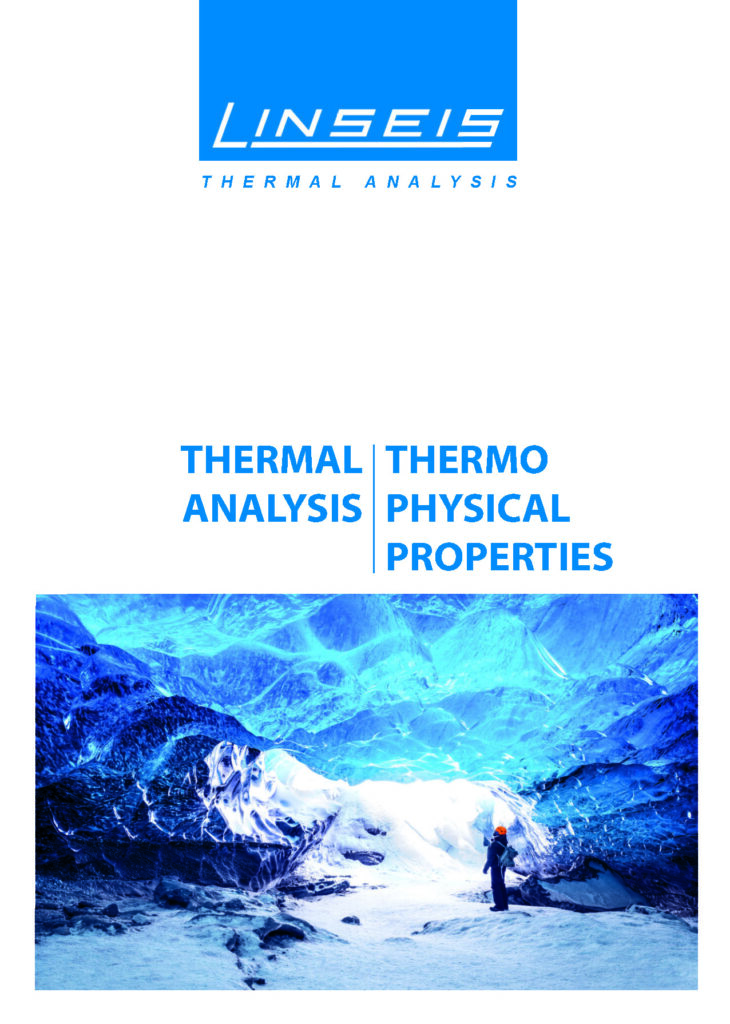Description
To the point
The design of the TMA PT 1600 (TMA L72) Thermomechanical Analyzer guarantees highest precision, reproducibility and accuracy. The system was constructed to performing a variety of Thermomechanical experiments, on an array of sample shapes and sizes, over a wide temperature range, to meet all TMA needs. The system can perform either static or dynamic measurements due to a built in force/frequency generator.
Typical materials under investigation are: composite materials, glass, polymers, ceramics and metals. The variety of measuring systems allows sample geometries such as fibers, rods, films, rods or cylinders.
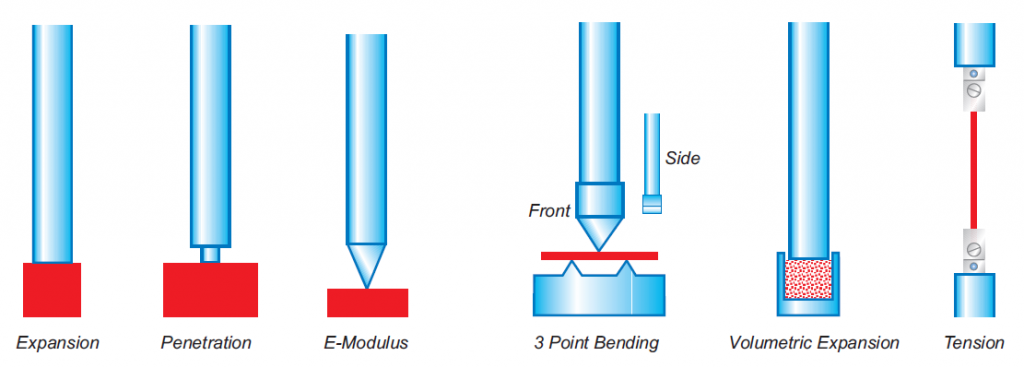
TMA / DTMA functions
With low, constant load:
- Linear thermal expansion analysis
- Volume changes
- Phase transitions
- Investigation of sintering processes
- Examination of the softening point
- Conversion points
- Swelling behavior
- Voltage investigation
With increasing constant load:
- Penetration
- Transition and comparative tests
- 3-point bending test
With dynamic load:
- Visco-elastic behavior
Additional optional functions:
- DTA examination
- (RCS) Rate Controlled Sintering Software
Unique features
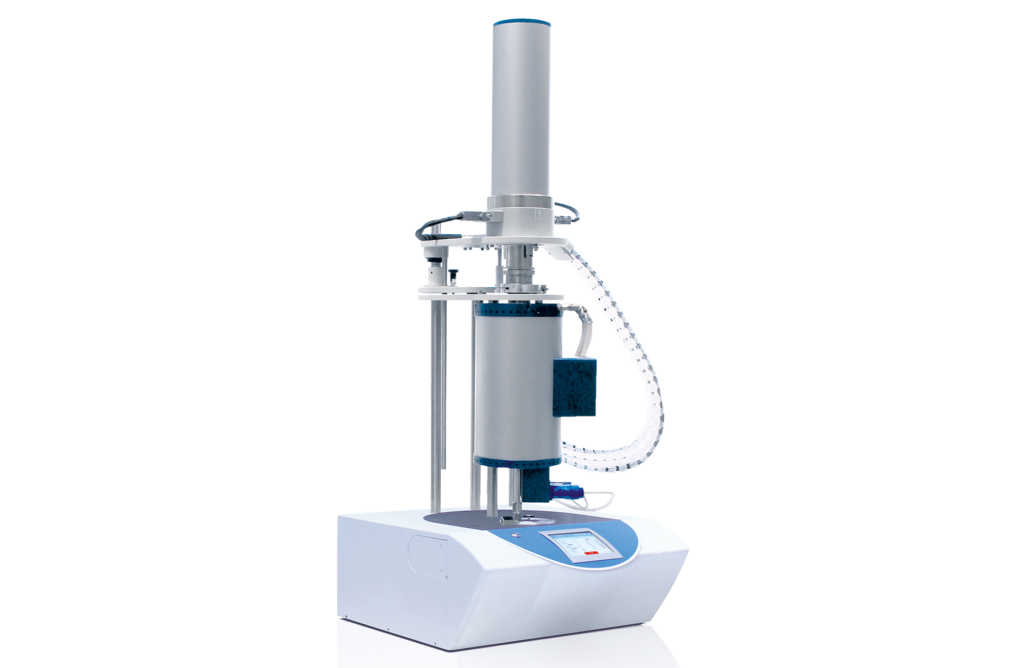
Wide temperature range:
measurements from
-150°C to 1600°C
Versatile measurements:
Static and dynamic tests
for different materials
Flexible sample holders:
Suitable for cylindrical, liquid,
film and fiber samples.
High-precision thermomechanical analysis:
investigation of expansion, Volume changes
and phase transitions.
Optional accessories:
Software-controlled,
rate-controlled sintering.
Questions? We're just a call away!
+1 (609) 223 2070
+49 (0) 9287/880 0
Our service is available Monday to
Thursday from 8 am to 4 pm
and Friday from 8 am to 12 pm.
We are here for you!
Specifications
Hard Facts
MODEL | TMA PT 1600 (TMA L72) |
|---|---|
| Temperature range: | RT up to 1600°C |
| Sample size: | 30 mm |
| Contact pressure: | up to 1 or 5.7 N |
| Frequency: | 1 or 5 Hz |
| Resolution: | 0.125 nm |
| Atmosphere: | reducing, inert, oxidizing static / dynamic |
| Electronics: | Integrated |
| Interface: | USB |
Available accessories
- Devices for sample preparation
- Various sample holders
- Caliper for manual or online entry of the sample length
- Various gas boxes: manual, semi-automatic and MFC controlled
- Software option – Rate Controlled Sintering (RCS)
- Various rotary and turbomolecular pumps
- LN2 cooling
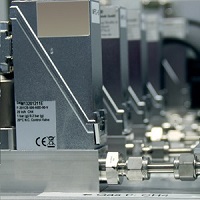
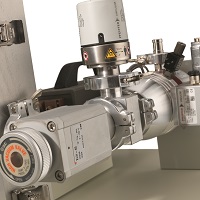
Software
Making values visible and comparable
The powerful LINSEIS thermal analysis software, which is based on Microsoft® Windows®, performs the most important function in the preparation, execution and evaluation of thermoanalytical experiments, in addition to the hardware used.
With this software package, Linseis offers a comprehensive solution for programming all device-specific settings and control functions, as well as for data storage and evaluation.
The package was developed by our in-house software specialists and application experts and has been tried and tested over many years.
Thermomechanical analysis properties
- Glass transition and softening point determination
- Automatic softening point switch-off, freely adjustable (system protection)
- Display of absolute or relative shrinkage or expansion
- Representation and calculation of technical / physical expansion coefficients
- Rate-controlled sintering (software option)
- Sintering process evaluation
- Automatic evaluation routines
- System correction (temperature, zero curve, etc.)
- Automatic zero point adjustment
- Automatic punch contact pressure control
- Density determination
- Modulus of elasticity
- Force variably adjustable
General functions
- Real-time color display
- Automatic and manual scaling
- Display of the axes freely selectable (e.g. temperature
e.g. temperature (x-axis) against delta L (y-axis)) - Mathematical calculations (e.g. first and second derivatives)
- Saving complete evaluations
- Multitasking function
- Multi-user function
- Zoom function for curve sections
- Any number of curves can be loaded on top of each other for comparison
- Online Help Menu
- Free labeling
- EXCEL® and ASCII export of measurement data
- Data smoothing
- Zero curves are offset
- Cursor function
- Statistical curve evaluation (mean value curve with confidence interval)
- Tabular printout of the data and expansion coefficients
- Calculation of Alpha Phys, Alpha Tech, relative expansion L/L0
- Curve arithmetic, addition, subtraction, multiplication
Applications
Application example: Elastomer (no high temperature application)
Due to their very special and very versatile properties, elastomers containing polyurethane are used in a wide range of applications in almost all branches of industry.
These vary from the automotive, electrical, design and textile industries to mining and high-performance applications.
In the measurement shown, a polyurethane was heated under sinusoidal force, whereby a clear softening of the material can be observed from the glass point at around 30°C, which is made visible by the greater amplitude of the change in length.
The modulus of elasticity E, which can be determined with this measurement, also shows a corresponding change.
The plastic deformation range only occurs at higher temperatures and was not reached in this measurement up to 130°C.
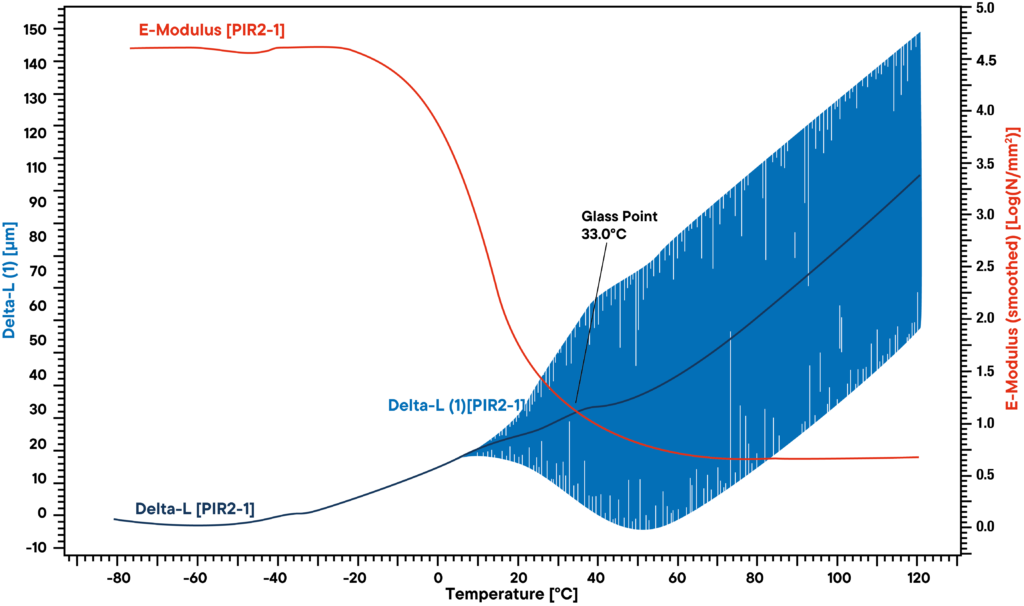
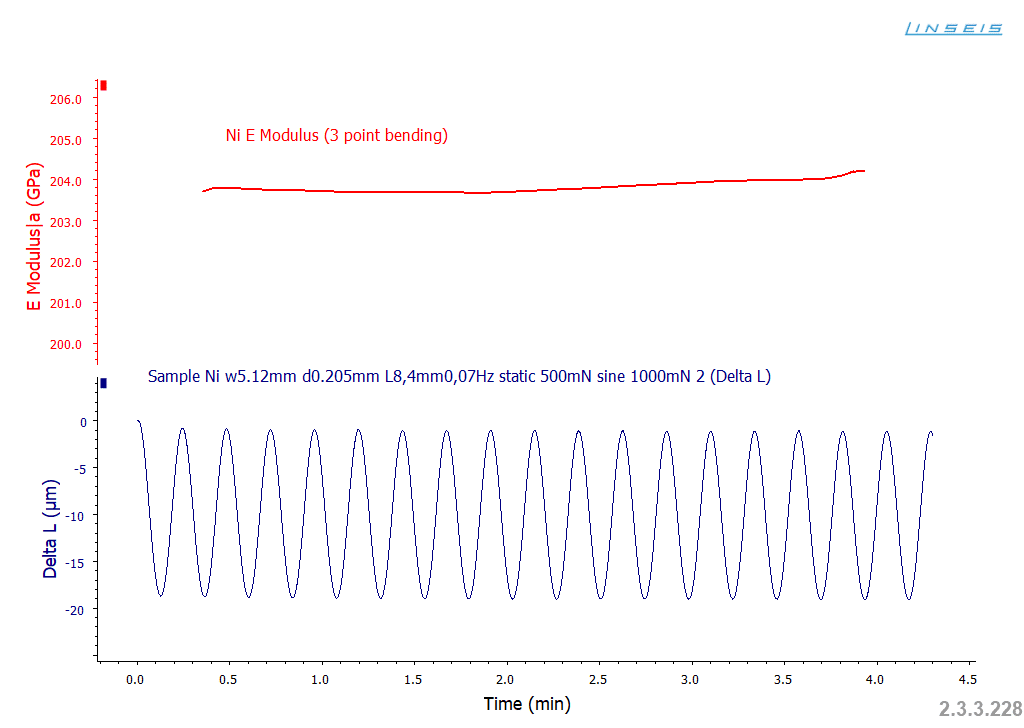
Application example: Determination of the Young’s modulus by Linseis TMA PT 1600 (TMA L72)
The Linseis TMA PT 1600 (TMA L72) can apply sinusoidal force programs to any sample.
This allows the user to determine the flexural modulus as well as the Young’s modulus of almost any material.
Originally designed primarily for polymer applications, the Linseis TMA PT 1600 (TMA L72) has recently been upgraded to be able to measure harder materials such as metal alloys and pure metals, using force ranges up to 20 N by increasing the possible sample size.
In the application below, a nickel sample with a length of 8.4 mm, a diameter of 5.12 mm and a thickness of 0.2 mm was measured with a static force of 500 mN and a fluctuating sinusoidal force of 1 N in addition.
The blue curve shows the movement of the sample as a change in length caused by the force and the red curve shows the resulting modulus of elasticity of this 3-point bending test.
The test was performed at 50 °C and is very close to the literature data.
It could also be performed at any temperature the device can reach to investigate a wider range.
Different thermal expansion behavior of bricks depending on the relative humidity
Humidity can have a huge influence on many materials, especially materials that are used for packaging or construction such as polymers, wood, bricks, concrete and many more.
In the given application, two historical brick variants have been investigated and compared to contemporary, similar bricks regarding their expansion at different humidity levels.
Therefore, the materials were first measured at linear expansion mode using a Linseis TMA PT 1600 (TMA L72).
The result was a straight forward linear expansion.
Then the same experiment was repeated using a water vapor generator to simulate 35% relative humidity.
The samples were kept at these conditions for 2 h and then the expansion coefficient was again determined vs temperature keeping the humidity level constant.
The result shows a significant increase in linear expansion behavior due to swelling of the material.
This effect will occur at any humidity level and should be considered carefully when calculating the expansion of such materials for any application.
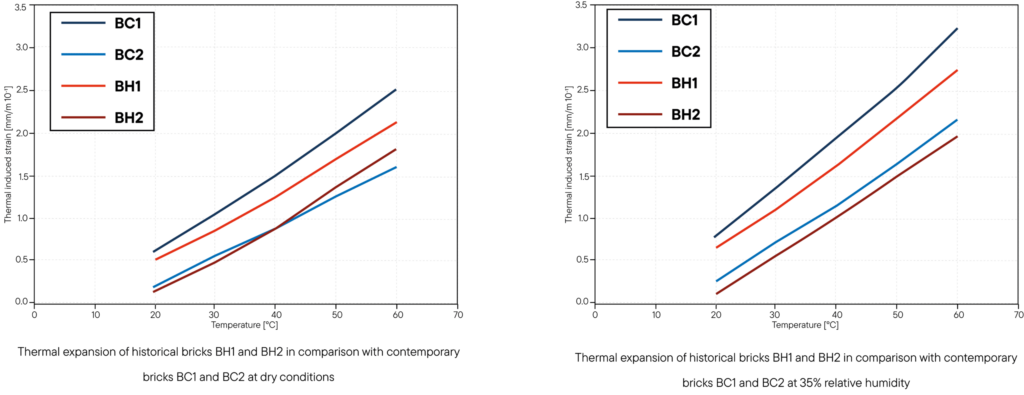
Well informed
